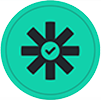Hello,
I want to trigger seven different emails on different dates for a summit, e.g. “April 24th 9am EST” send reminder email. Then delay until “April 26th 9am EST” and send another reminder from Mailchimp.
How can I be sure new users in my Mailchimp audience don’t get the reminders for a already past date, but get the next reminders on the queue in zapier?
The question below is confusing me as what happens when the date is in the past. What does it mean with continue? Does It means that it will trigger it if it’s within one hour? otherwise it will stop and keep my future task paused? or it will not trigger the next task but will go to the next available delay until and trigger the next reminder?

Thanks in advance!
Cheers
Best answer by XRay Tech
View original


